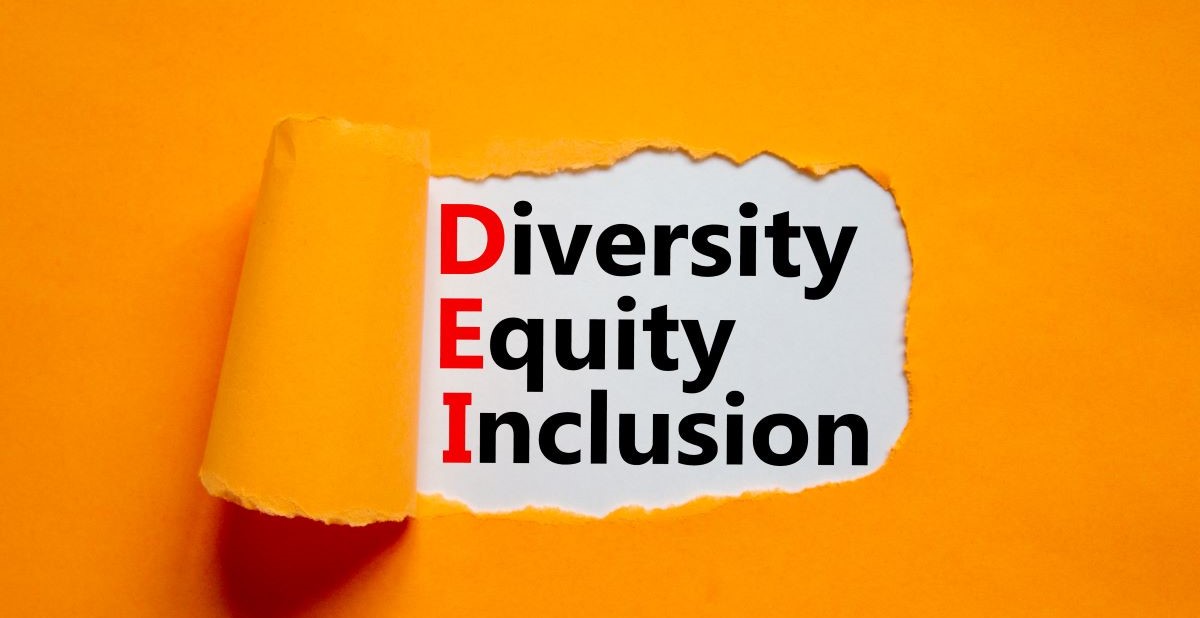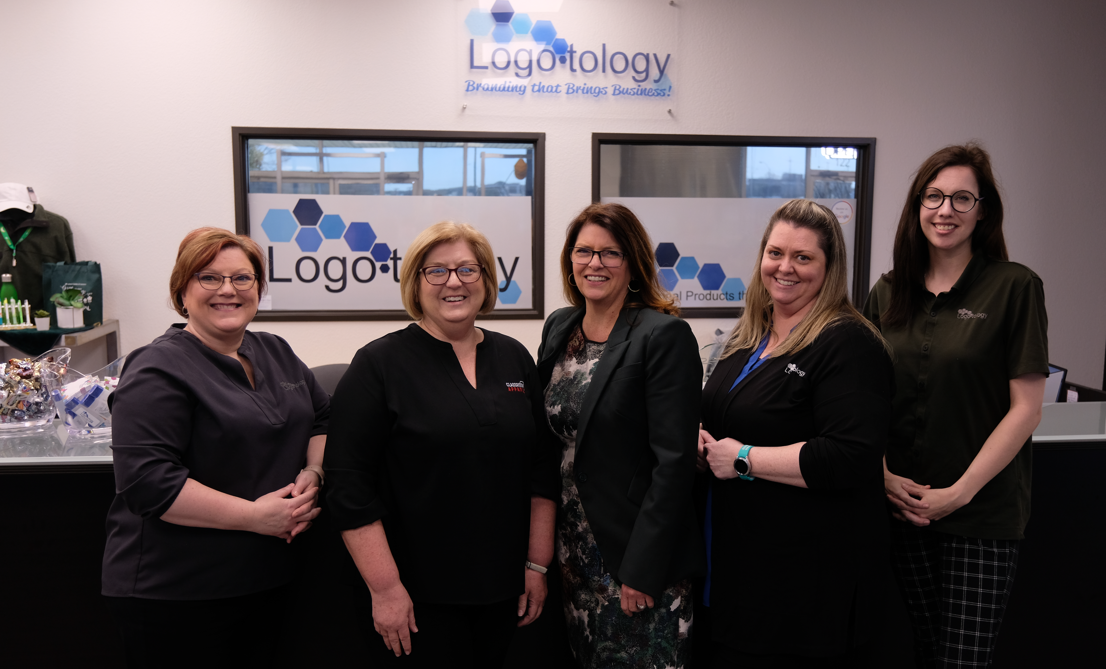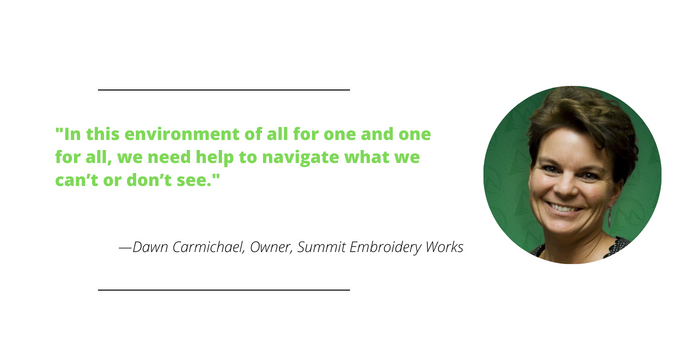PPAI Research Benchmarks Diversity At Typical Distributorships

A new benchmarking report from PPAI Research is revealing the makeup of a typical industry distributorship.
The Results
Distributors taking part in PPAI’s 2022 Sales Volume Estimate survey in December and January were also asked a series of voluntary questions to help the industry better understand itself. The results released in this article concern only distributors with revenue totaling $2.5 million or less – a typical industry business.
In total, 245 distributorships responded to the questions. They combined 652 employees.
- Average number of employees: 2.7
- Average number of female employees: 1.5
- Average number of non-white employees: 0.4
This sample size gives a little bit of insight to what smaller companies look like in our industry, which suggests a strong amount of representation from women but leaves room for improvement when it comes to non-white employees.
- Within this data, 55% of employees were female.
- 14% of employees were non-white.
These results are based solely on what was reported in the survey by responding companies. Within the general American public, according to results of the 2020 U.S. Census, 50.5% are women. The percentage of Americans declaring that they are white alone was 75.8%, and the white alone population without Hispanic or Latino individuals was 59.3%.

Diversity In Promo
Employee demographics are just one aspect of promo’s journey in creating a more diverse industry, but promo is indeed on a journey in this regard.
“I believe the diversity in the industry has improved over the 16 years we’ve been in business,” says Monica Scott, co-founder and president of Logotology, a Texas-based distributor staffed almost entirely by women. “Although most distributors are still individual contributors, the presence of the larger outfits has enabled a diverse pool of workers.”

Dawn Carmichael, owner of Summit Embroidery Works, a distributorship that has three employees, two of which identify as non-white according to PPAI’s survey, agrees with Scott’s sentiment.
“Without a doubt, it has become more diverse, from customers to products, to our environment in general,” Carmichael says. “If you want to stay in business, all blinders must be removed.”
- As Scott points out, many distributors in our industry are small and consist of just a few employees. Some could be single employee owner-operator businesses, and extremely small businesses may be more likely to employ family members.
Amri B. Johnson, author of Reconstructing Inclusion: Making DEI Accessible, Actionable and Sustainable, points out that many well-intentioned DEI efforts across all industries have faded even since 2020 for a number of reasons, including layoffs in many industries that cost organizations their most passionate DEI advocates.
With that notion in mind, it continues to be up to individual distributors and the industry as a whole to be active in both examining unconscious biases and being open to practices that can bring a wide range of demographic perspectives into the industry.
A company consisting of less than five employees might understandably be less diverse than much bigger companies, but Johnson suggests that companies of all sizes should at least be focusing on culture. Small companies can grow, after all. It is easier and more effective to build on a foundation of positive culture.
“They can start with basic things, such as educating people on how bias creeps into their decision-making in everything from talent acquisition and development to marketing approaches,” Johnson says.
Johnson recommends putting tangible measures to foster:
- Caring
- Openness
- Safety (including welcoming feedback)
- Trust
The survey’s findings suggest that many small companies include strong representation by women. According to Scott, maintaining that trend and eventually reflecting similarly proportionate numbers for non-white employees could mean showing openness to flexibility through pay structure or work arrangements. More interested applicants will usually mean a wider range of perspectives and backgrounds.
Carmichael says that flexibility is something she can offer her employees, working with them when issues arise that are specific to her individual team members.

- Product focus can be an opportunity.
“Improvements could be made in merely representing products that might be attractive to diverse individuals and companies,” Scott says. She suggests apparel that is more culturally understanding, creating pathways in this area. Scott says even something as simple as recognizing all the holidays pertinent to different cultures and religions could potentially go a long way.
Johnson lists a few questions companies could regularly ask themselves:
- What am I doing to create the conditions for my team to thrive?
- If I see the potential for future growth, what do I want people to feel when they walk in our doors?
- Are we there yet, and what systems do we need to refine to get there or continue in the right direction?
As in nearly every industry, diversity will continue to be a journey for small and large companies in promo. Scott believes promo’s newer faces will continue to put us on the right track.
“I do believe that with the younger population [entering the industry], more diversity will emerge,” Scott says.
PPAI will continue to make efforts to learn and educate members on this topic. Members can find DEI resources at PPAI.org.
- The Association makes available a Diversity, Equity, and Inclusion Playbook for download, the content of which will continuously evolve.
- PPAI’s online education includes 39 webinars that fall under the category of “Diversity and Inclusion.”
- PPAI has formed a volunteer DEI Task Force that is currently chaired by Cindy Tsuji, senior account executive at Image Source.
“I look to my industry leaders such as PPAI to help me stay current and how to better provide for my customers,” Carmichael says. “In this environment of all for one and one for all, we need help to navigate what we can’t or don’t see.”

